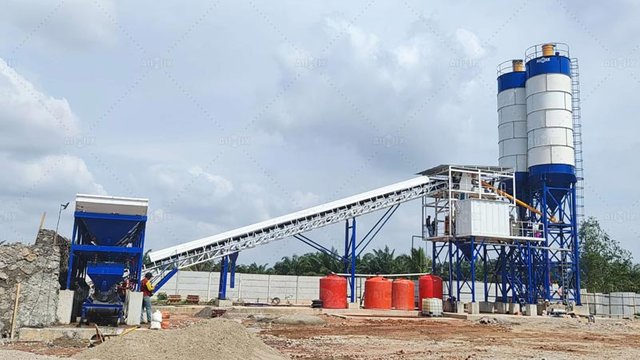Aggregate weighing is one of the most crucial components in the operation of a ready-mix concrete plant. Accurate weighing ensures the correct proportions of materials like sand, gravel, and crushed stone are used to produce high-quality concrete. In the construction industry, where precision and consistency are key, understanding the different methods of aggregate weighing can help engineers, contractors, and plant operators make informed decisions. This article explores the main forms of aggregate weighing and how they impact production efficiency and concrete quality.
Why Aggregate Weighing Matters in Concrete Production
In ready-mix concrete plants(planta de concreto premezclado), aggregates make up the bulk of the mixture. If the aggregates are not weighed correctly, the resulting concrete may have inconsistent strength, poor workability, or even structural failure. Accurate weighing not only ensures compliance with project specifications but also contributes to cost control, as material waste can be minimized.

Types of Aggregate Weighing Systems
1. Independent Weighing
In this system, each type of aggregate—such as sand, coarse gravel, or crushed stone—is weighed separately in its own hopper. The material is first released from its storage bin into the hopper, and then weighed before being discharged into the mixer. This form of weighing provides high accuracy, as the load cell system only deals with one material at a time. It is especially preferred in high-quality concrete production projects, where precise mix design is critical.
2. Cumulative Weighing
Cumulative weighing involves using a single hopper to weigh all the aggregate materials sequentially. The system measures the first material, then the second is added on top, and so on. The load cell records the total weight of all materials combined. While this system reduces equipment costs and saves space, it requires careful calibration to ensure that errors do not accumulate. This method is often found in budget-friendly configurations where controlling the overall concrete plant price(planta de hormigón precio) is a priority.
3. Belt Weighing Systems
Instead of weighing aggregates in hoppers, belt weighing systems use conveyor belts equipped with load cells to continuously monitor the weight of materials as they move. This method allows for real-time monitoring and control, making it suitable for large-scale projects and continuous production lines. Though more complex and costly, belt weighing systems offer efficient throughput and help reduce batching cycle times.
4. Skip Hoist Weighing
Skip hoist systems use a bucket or skip that lifts aggregates to the mixer. In many modern designs, the skip itself is equipped with load cells and acts as the weighing container. This compact and efficient setup is ideal for small to medium-sized concrete plants located in tight job sites or urban areas. When combined with digital control panels, skip hoist systems offer decent accuracy and low maintenance.
Choosing the Right Weighing Method for Your Plant
When selecting the best aggregate weighing system, several factors must be considered. These include the size of the plant, the desired production capacity, project specifications, and available budget. For example, a high-output ready-mix concrete plant operating in a major infrastructure project may benefit from the speed and accuracy of independent or belt weighing systems. Meanwhile, smaller batch operations might choose cumulative weighing to reduce their initial concrete plant price.
Impact of Technology on Aggregate Weighing
Advancements in sensor technology, software automation, and real-time data analysis have significantly improved the accuracy and reliability of aggregate weighing systems. Many modern systems now integrate programmable logic controllers (PLCs), human-machine interfaces (HMIs), and cloud-based monitoring for better process control. These technological upgrades help improve batching efficiency, reduce human error, and support better decision-making in plant operations.
Conclusion
Understanding the different forms of aggregate weighing is essential for anyone involved in concrete production. Whether you're working with a large-scale ready-mix concrete plant or a compact facility, selecting the right system directly affects your operational efficiency, concrete quality, and overall cost. As the construction industry continues to evolve, investing in accurate and reliable aggregate weighing systems is a smart move that pays off in both performance and profitability.